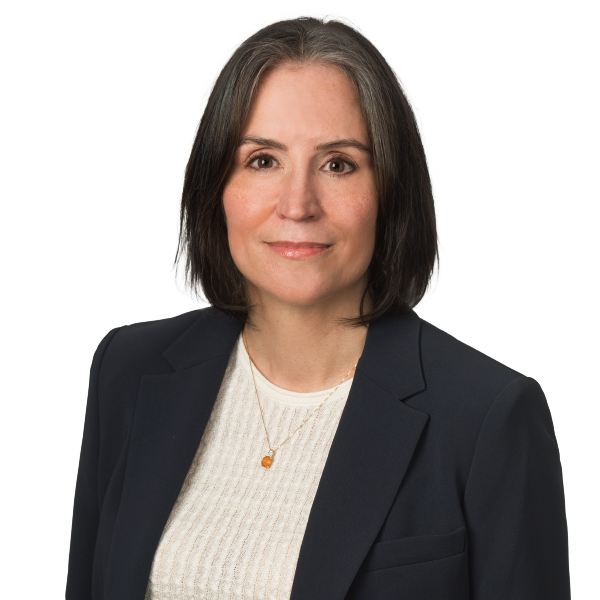Buyside Perspectives on the Emerging IPO Cycle – A Conversation with Baron Funds
With the success of recent IPOs such as Reddit, Astera Labs, Ibotta, and Rubrik, the environment for growth company IPOs, while selective, is favorable. In a recent installment of Riveron’s IPO Readiness series, Riveron Capital Markets and Investor Relations practice leads, Jeff Bernstein and April Scee, sat down with Cliff Greenberg and Ashim Mehra of Baron Funds, one of the most highly coveted investors for companies going public. Cliff and Ashim are the portfolio managers of the Baron Small Cap Fund and Baron Technology Fund, respectively. They discussed the health of the equity capital markets; their investment processes; how they like to interact with management teams, bankers, and Wall Street research analysts; and gave great advice around best practices in executing not only a successful IPO but how to build and deepen relationships with institutional investors once public.
Expert Q&A
April Scee (AS): How does Baron Funds evaluate a potential IPO investment?
Cliff Greenberg (CG): Baron Funds evaluates potential IPO investments through a structured and collaborative process. Our 45-person research team, organized by sector, maintains close ties with investment banks to receive early notifications about upcoming IPOs. They adopt an “open ear policy,” meeting with virtually every potential IPO candidate. Initial meetings often occur years before a company goes public, allowing Baron to assess the business and management team over time. These meetings, led by sector analysts and involving portfolio managers, focus on understanding the company’s operations, leadership, and objectives. We provide feedback to the company and the bank, suggesting improvements and discussing valuation parameters. This iterative process ensures a thorough evaluation and positions Baron to potentially participate in the IPO.
AS: Could you explain what you need to see for a potential IPO investment to meet your investment criteria and how do you prioritize various factors, such as scale, growth, profitability, management, etc.?
Ashim Mehra (AM): We approach potential IPO investments by looking for high-quality businesses that are leaders in their sector, exhibit strong growth, and have a proven track record of success. Our firm places significant emphasis on understanding the management team, seeking leaders we can trust and partner with long-term. We also prioritize the potential future value of the company, rather than its current state, aiming for substantial, long-term investments. While different portfolio managers may weigh factors such as scale, growth, and profitability differently, the consistent focus is on the company’s potential and the capabilities of its leadership. Additionally, we create our own financial models informed by both company projections and insights from investment banks, to form independent estimates that guide our investment decisions. The evaluation of management, particularly CEOs who exhibit a deep understanding of both their business and financials, is also crucial in our assessment process.
AS: What have been your recent investment activities, and how do you believe we should be thinking about the next 12 to 18 months from an IPO perspective?
CG: In our recent investment activities, we participated in four out of five IPOs, spending significant time pre-IPO with two of them. Notably, four of these companies were profitable or nearly so, which influenced our decisions. We observed some interesting dynamics, such as companies and investment banks pricing deals based on buy-side estimates, leading to reasonable valuations and strong performance post-IPO. For example, companies like TransDigm’s smaller counterpart, Loar Holdings, saw substantial price increases in the IPO processing range despite initially conservative estimates due to unique timing circumstances. Moving forward, we anticipate an increase in IPOs towards the end of the year and early next year, assuming market conditions remain stable. Valuations on IPOs are already back to traditional “IPO Discount” ranges.
Reflecting on the 2021 IPO and SPAC bubble, it’s clear that many companies lacked internal preparedness. High-quality businesses should focus on meeting long-term investor expectations and ensuring sufficient deal size to secure significant investment positions. This approach will help build a solid initial shareholder base and position companies for long-term success.
AS: Much has been said about the balance between growth and profitability for companies that are considering an IPO as well as for public companies. How does Baron look at this?
CG: We consider the balance between growth and profitability for companies, particularly those contemplating an IPO, through a multifaceted lens. I emphasize evaluating a company based on more tangible financial metrics like operating cash flow, true EBITDA, free cash flow, or earnings, rather than on revenue multiples. I prefer investing in established, profitable companies.
AM: Conversely, I like to highlight the importance of sustainable growth and incremental margins, particularly for tech firms. There needs to be a clear path to profitability and understanding unit economics, especially in sales and marketing.
Both Cliff and Ashim recommend a cautious approach, wary of the deceleration in growth and the uncertainties of unprofitable businesses, a sentiment influenced by the market volatility experienced in 2022
AS: Regarding IPO pricing–it is a balancing act. What guidance would you offer to ECM and Syndicate desks on how to strike the right balance, to avoid being either overly aggressive or setting the price too low? What do you view as the dangers of each?
AM: IPO pricing is complex, and there is a prevalence of inflated demand from hedge funds eager to secure allocations, which can distort true market interest. To mitigate this, underwriters should seek honest feedback from reliable investors to gauge genuine demand.
CG: I would add that IPOs should be reasonably priced to allow for future value appreciation, benefiting long-term investors rather than short-term traders.
Jeff Bernstein (JB): Bankers need to discern between different types of mutual funds and hedge funds to inform issuers accurately about investor intentions as some hedge funds will be great early investors and thought leaders in the markets, while some mutual funds are well-known for “flipping” deals, especially smaller ones, where they cannot amass a decent position relative to their size.
AS: We’ve given some great advice to management teams that are pre-IPO, but I’m hoping we could drill down into post-IPO investor relations and building relationships with institutional shareholders versus their venture or PE holders. What are the biggest things that they need to keep in mind, and what is the difference between being private and public?
AM: Post-IPO, companies must significantly increase their communication frequency and leverage sell-side research analysts to effectively amplify their message. Regular and transparent updates, particularly through conference calls, are crucial.
CG: There also needs to be a shift in focus from short-term earnings to long-term growth, which aligns with the interests of public shareholders who prioritize sustainable value creation over immediate returns. Consistent messaging and honesty about challenges are vital, as credibility and trust are paramount in maintaining investor confidence.
JB: Maintaining a long-term perspective is essential for retaining and attracting talent, as employee morale is closely tied to the company’s equity performance. Over-promising and under-delivering can erode trust and motivation, so a balanced, truthful approach that acknowledges both successes and setbacks is recommended.
By focusing on high-quality, sector-leading businesses with strong growth potential, and placing significant emphasis on management teams, Baron Funds aims for substantial, long-term investments. With a cautious approach influenced by market volatility in 2022, Baron balances growth and profitability, stresses genuine IPO pricing, and underscores the need for post-IPO communication and long-term growth focus to maintain investor confidence.



